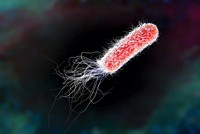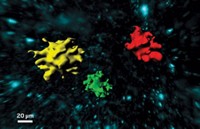Advertisement
Grab your lab coat. Let's get started
Welcome!
Welcome!
Create an account below to get 6 C&EN articles per month, receive newsletters and more - all free.
It seems this is your first time logging in online. Please enter the following information to continue.
As an ACS member you automatically get access to this site. All we need is few more details to create your reading experience.
Not you? Sign in with a different account.
Not you? Sign in with a different account.
ERROR 1
ERROR 1
ERROR 2
ERROR 2
ERROR 2
ERROR 2
ERROR 2
Password and Confirm password must match.
If you have an ACS member number, please enter it here so we can link this account to your membership. (optional)
ERROR 2
ACS values your privacy. By submitting your information, you are gaining access to C&EN and subscribing to our weekly newsletter. We use the information you provide to make your reading experience better, and we will never sell your data to third party members.
Analytical Chemistry
Multiple imaging methods probe host-pathogen interactions
Combination shows overlapping distributions of metals and proteins
by Celia Henry Arnaud
March 19, 2018
| A version of this story appeared in
Volume 96, Issue 12

Abscesses associated with bacterial infections are a complex mixture of host cells and bacteria. And not all the bacteria behave the same way even within a single abscess. Because such lesions are so heterogeneous, much remains unknown about the interactions between host cells and pathogens. To get a better picture of what’s going on, Eric P. Skaar and coworkers at Vanderbilt University combined multiple imaging methods to observe the competition for metals between Staphylococcus aureus and an infected mouse (Sci. Transl. Med. 2018, DOI: 10.1126/scitranslmed.aan6361). They used magnetic resonance imaging to line up images obtained by other methods. By using laser ablation inductively coupled plasma mass spectrometry, they were able to determine the distribution of various metal nutrients. The images revealed that abscesses are rich in calcium and relatively deprived of manganese, iron, and zinc. Within a single lesion, some bacteria can be nutrient rich while others are nutrient starved. The researchers used MALDI mass spectrometry imaging to map mouse and bacterial proteins involved in the stress response to infection. By lining up both types of mass spec images, the researchers were able to identify proteins that are spatially associated with metal distribution. The imaging methods could lead to culture- and label-free methods of pathogen diagnosis, the researchers note.





Join the conversation
Contact the reporter
Submit a Letter to the Editor for publication
Engage with us on Twitter